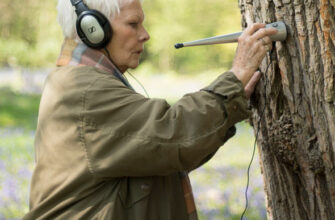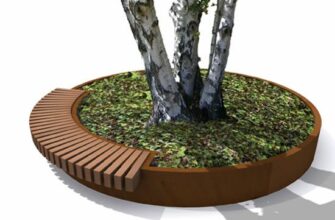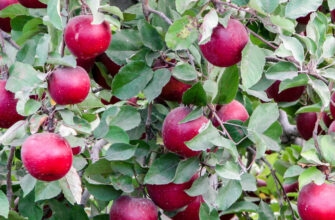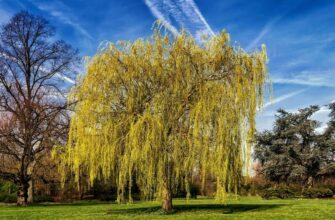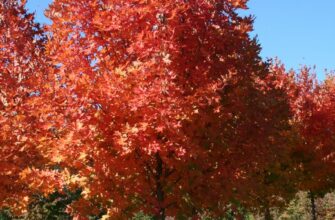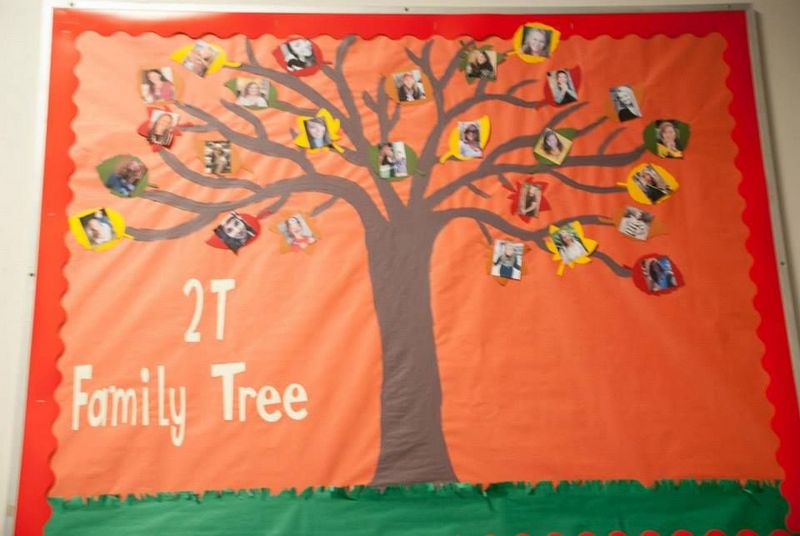
- What I Learned as a Tree Board Member
- Responsibilities as a Tree Board Member
- Importance of Tree Preservation
- Environmental Benefits of Trees
- Community Engagement and Education
- Tree Planting Programs
- Tree Pruning and Maintenance
- Tree Removal and Replacement
- Tree Board Policies and Regulations
- Collaboration with Other Departments
- Budgeting and Funding for Tree Projects
- Public Outreach and Awareness Campaigns
- Tree Inventory and Mapping
- Tree Board Meetings and Decision Making
- Challenges and Lessons Learned
- Future Goals and Initiatives
What I Learned as a Tree Board Member
During my time as a member of the Tree Board, I had the opportunity to gain a valuable education about the importance of trees in our community and the environment. Trees play a crucial role in maintaining the sustainability of our ecosystem, and it was fascinating to learn about their various benefits and functions.
Being part of the board also allowed me to actively contribute to the well-being of our community. By advocating for the preservation and planting of trees, we were able to enhance the beauty of our neighborhoods and create a healthier environment for everyone. It was rewarding to see the positive impact our efforts had on the community.
One of the most valuable lessons I learned from my experience on the Tree Board was the significance of environmental sustainability. Trees not only provide shade and improve air quality, but they also help combat climate change by absorbing carbon dioxide. Understanding the role trees play in mitigating the effects of global warming has made me more conscious of the choices I make in my own life to reduce my carbon footprint.
Overall, my time on the Tree Board was a transformative experience. It deepened my appreciation for the natural world and the importance of preserving it for future generations. I gained a greater understanding of the intricate relationship between humans and trees, and the impact our actions have on the environment. I am grateful for the lessons I learned and the opportunity to contribute to the betterment of our community.
Responsibilities as a Tree Board Member
As a tree board member, I had the opportunity to gain valuable experience and learn about the importance of trees in our community. One of my main responsibilities was to promote sustainability and environmental awareness by advocating for the preservation and planting of trees.
Being part of the tree board involved working closely with other board members to develop and implement strategies for tree education and outreach programs. We organized workshops and events to educate the community about the benefits of trees, such as their role in improving air quality, reducing noise pollution, and providing shade.
Another important responsibility was to review and approve tree removal and planting permits. This required careful consideration of the impact on the environment and the community’s needs. We aimed to strike a balance between preserving existing trees and allowing for development and growth.
The tree board also played a crucial role in developing and maintaining a comprehensive tree inventory. This involved conducting regular tree assessments to identify potential hazards and ensure the health and longevity of the urban forest. We collaborated with arborists and tree care professionals to implement proper maintenance and pruning practices.
Overall, serving on the tree board taught me the importance of community involvement in preserving and enhancing our natural environment. It was a rewarding experience that allowed me to contribute to the sustainability of our community while also promoting education and awareness about the benefits of trees.
Importance of Tree Preservation
As a member of the Tree Board, I have had the opportunity to witness firsthand the importance of tree preservation in our community. Trees play a vital role in our environment, providing numerous benefits that contribute to the overall health and sustainability of our ecosystem.
Through my experience on the board, I have learned that trees are not just aesthetically pleasing, but they also have a significant impact on the quality of our air and water. Trees act as natural filters, removing pollutants from the air and absorbing excess rainwater, which helps to prevent flooding and erosion.
Tree preservation also has a positive effect on our community’s well-being. Trees provide shade and reduce the temperature in urban areas, making them more comfortable and inviting for residents and visitors alike. Additionally, trees have been shown to have a calming effect on people, reducing stress and improving mental health.
Education is another key aspect of tree preservation. By promoting awareness and understanding of the value of trees, we can encourage individuals and communities to take an active role in their preservation. This includes teaching proper tree care and maintenance techniques, as well as highlighting the many benefits that trees provide.
Furthermore, the Tree Board plays a crucial role in advocating for the protection of trees during development and construction projects. By ensuring that proper measures are taken to preserve existing trees and plant new ones, we can maintain the integrity and beauty of our community for future generations.
In conclusion, my time as a member of the Tree Board has reinforced the importance of tree preservation in our community. Trees are not just a beautiful part of our landscape; they are essential for the health of our environment, the well-being of our community, and the sustainability of our future.
Environmental Benefits of Trees
As a member of the Tree Board, I had the opportunity to experience firsthand the numerous environmental benefits that trees provide to our community. Through my involvement, I learned about the significant impact that trees have on the environment and the importance of their preservation.
Trees play a vital role in improving air quality. They act as natural filters, absorbing harmful pollutants such as carbon dioxide and releasing oxygen. This process, known as photosynthesis, not only improves the quality of the air we breathe but also helps to mitigate the effects of climate change by reducing greenhouse gas emissions.
In addition to their air purifying abilities, trees also help to conserve energy. When strategically planted around buildings, they provide shade during the hot summer months, reducing the need for air conditioning. This not only saves energy but also lowers electricity bills and reduces the strain on the power grid.
Furthermore, trees have a positive impact on water quality. Their root systems help to prevent soil erosion and filter rainwater, reducing the amount of runoff and pollutants that enter our waterways. This helps to protect the health of aquatic ecosystems and ensures a clean water supply for our community.
Another important environmental benefit of trees is their role in supporting biodiversity. Trees provide habitat for a wide range of species, including birds, insects, and small mammals. By preserving and planting trees, we can create valuable wildlife corridors and promote a healthy and diverse ecosystem.
Lastly, trees have a significant educational value. They serve as living classrooms, providing opportunities for hands-on learning about the environment and ecology. By engaging with trees and nature, individuals of all ages can develop a greater appreciation for the natural world and become more environmentally conscious.
In conclusion, my experience as a Tree Board member has taught me the immense environmental benefits that trees bring to our community. From improving air quality and conserving energy to supporting biodiversity and providing educational opportunities, trees play a crucial role in creating a healthy and sustainable environment.
Community Engagement and Education
As a member of the Tree Board, I had the opportunity to engage with the community and promote education about trees and their importance in our environment. Through various outreach programs and events, we aimed to raise awareness about the benefits of trees and encourage sustainable practices.
One of the most rewarding experiences was organizing tree planting workshops for local residents. These workshops provided hands-on learning opportunities for community members to understand the proper techniques for planting and caring for trees. It was inspiring to see the enthusiasm and eagerness of participants as they actively contributed to improving their surroundings.
In addition to workshops, we also organized educational seminars and presentations on topics such as tree identification, tree maintenance, and the role of trees in mitigating climate change. These events were open to all community members and served as a platform for sharing knowledge and fostering a sense of environmental responsibility.
Another important aspect of community engagement was collaborating with local schools and educational institutions. We developed partnerships to incorporate tree-related curriculum into classrooms, allowing students to learn about the importance of trees and their role in maintaining a healthy ecosystem. By engaging young minds, we hoped to instill a sense of environmental stewardship and inspire future generations to protect and preserve our natural resources.
Overall, my experience as a Tree Board member taught me the power of community engagement and education in promoting sustainable practices. By empowering individuals with knowledge and providing them with the tools to make a positive impact, we can create a greener and more sustainable future for our community.
Tree Planting Programs
Tree planting programs are an essential part of promoting sustainability and preserving the environment. Through my experience as a Tree Board Member, I have learned the importance of these programs in educating the community about the benefits of trees and involving them in the process of planting and caring for trees.
One of the key aspects of tree planting programs is the opportunity they provide for education. By engaging community members in the planting process, they can learn about the different types of trees, their growth cycles, and the environmental benefits they provide. This hands-on experience fosters a deeper understanding and appreciation for the role trees play in our ecosystem.
Tree planting programs also have a significant impact on the community. By involving residents in the process, these programs create a sense of ownership and pride in the environment. It brings people together, fostering a sense of community spirit and collaboration. Additionally, the presence of trees enhances the aesthetic appeal of the community, making it a more attractive place to live and visit.
Moreover, tree planting programs contribute to environmental sustainability. Trees help to improve air quality by absorbing carbon dioxide and releasing oxygen. They also provide shade, reducing the need for energy-consuming air conditioning during hot summer months. By planting trees, we are actively working towards creating a greener and more sustainable future.
As a member of the Tree Board, I have witnessed the positive impact of tree planting programs firsthand. It has been a rewarding experience to see how the community comes together to plant and care for trees, and the lasting benefits that result. These programs not only beautify the environment but also foster a sense of responsibility towards nature and the importance of preserving it for future generations.
Tree Pruning and Maintenance
As a former member of the Tree Board, my experience has taught me the importance of proper tree pruning and maintenance for the sustainability of our environment. Pruning plays a vital role in promoting the health and growth of trees, while also ensuring the safety and aesthetics of our community.
Tree pruning is not just about removing dead or diseased branches; it is a science that requires careful consideration of the tree’s structure and growth patterns. By removing weak or crossing branches, we can help the tree develop a strong and balanced framework, reducing the risk of breakage during storms or high winds.
In addition to promoting tree health, pruning also contributes to the overall well-being of our environment. Properly pruned trees can provide shade, reduce energy consumption, and improve air quality. By maintaining a healthy tree canopy, we can create a more sustainable and resilient community.
Education is a crucial aspect of tree pruning and maintenance. As a Tree Board member, I had the opportunity to organize workshops and seminars for the community, providing valuable information on proper pruning techniques. By empowering residents with knowledge, we can foster a culture of responsible tree care and ensure the longevity of our urban forest.
Being a member of the Tree Board allowed me to witness firsthand the positive impact that proper tree pruning and maintenance can have on our community. By investing in the health and well-being of our trees, we are investing in the future of our environment and the quality of life for generations to come.
Tree Removal and Replacement
As a member of the Tree Board, I had the opportunity to learn about the importance of tree removal and replacement in promoting sustainability and protecting the environment. The process of removing a tree is not taken lightly, as it can have significant impacts on the community and the ecosystem.
One of the key aspects of tree removal is ensuring that it is done responsibly and with proper consideration for the surrounding environment. This involves assessing the health and condition of the tree, as well as its impact on the safety of the community. If a tree is diseased, damaged, or poses a risk to nearby structures or people, it may need to be removed.
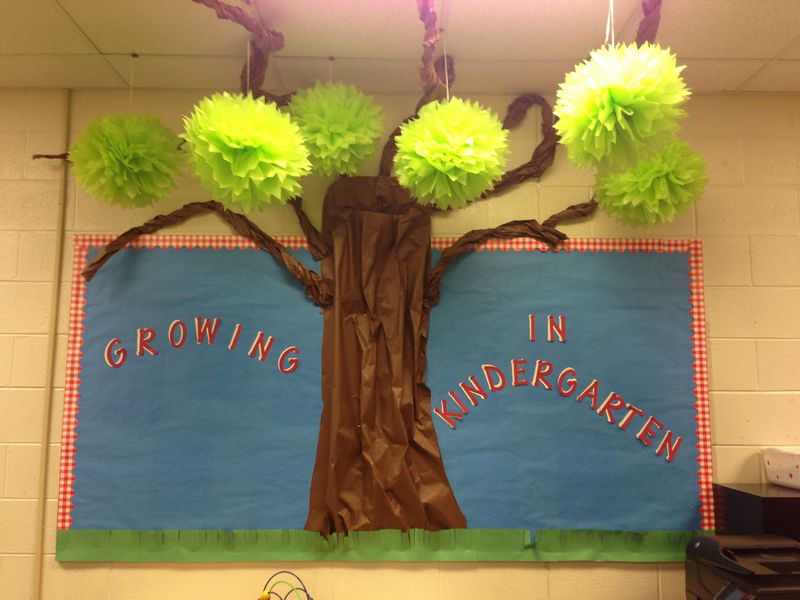
However, the removal of a tree is not the end of the story. It is essential to prioritize the replacement of the tree to maintain the environmental benefits it provided. Trees play a crucial role in improving air quality, reducing stormwater runoff, and providing shade and habitat for wildlife. Therefore, the Tree Board works to ensure that for every tree removed, a suitable replacement is planted.
Education is a vital component of the tree removal and replacement process. The Tree Board organizes workshops and outreach programs to educate the community about the importance of trees and the reasons behind their removal. By raising awareness, we can foster a sense of stewardship and encourage community members to actively participate in the tree replacement efforts.
My experience as a Tree Board member has taught me that tree removal and replacement is a complex and multifaceted process. It requires careful consideration of the environmental impact, community safety, and the long-term sustainability of the ecosystem. By actively participating in this process, we can ensure that our community continues to thrive and benefit from the presence of trees.
Tree Board Policies and Regulations
As a member of the Tree Board, I gained valuable experience and education about the importance of implementing effective policies and regulations to protect and enhance our community’s environment. The board plays a crucial role in ensuring the health and well-being of our trees, and I have learned firsthand the significance of having clear and comprehensive policies in place.
One of the key lessons I learned during my time as a Tree Board member is that tree policies should be based on scientific research and expert recommendations. It is essential to stay informed about the latest developments in arboriculture and tree care practices. By regularly updating our policies, we can ensure that our community benefits from the most up-to-date knowledge and techniques.
Another important aspect of tree board policies is the need for community involvement and engagement. Trees are a shared resource, and it is crucial to include the input and feedback of residents and stakeholders in the decision-making process. By actively involving the community, we foster a sense of ownership and responsibility towards our urban forest.
Furthermore, tree board policies should prioritize the preservation and protection of existing trees. This can be achieved through measures such as tree preservation ordinances, which require permits for tree removal and encourage the planting of new trees to offset any loss. By implementing such regulations, we can maintain the ecological balance of our environment and ensure the long-term sustainability of our tree canopy.
In addition to preservation, tree board policies should also focus on promoting tree planting and maintenance. This can be achieved through initiatives such as tree planting programs, educational campaigns, and partnerships with local organizations. By encouraging the planting of trees and providing resources for their care, we can enhance the beauty of our community and improve the overall quality of life for residents.
In conclusion, my experience as a Tree Board member has taught me the importance of well-defined policies and regulations for the care and management of our community’s trees. By basing our policies on scientific research, involving the community, prioritizing preservation, and promoting tree planting, we can create a sustainable and thriving urban forest for future generations to enjoy.
Collaboration with Other Departments
As a member of the Tree Board, I had the opportunity to collaborate with various departments within the community to promote environmental sustainability and education. Through these collaborations, I gained valuable experience and learned the importance of working together to achieve common goals.
One of the departments that I had the chance to collaborate with was the Department of Education. Together, we organized tree planting events and workshops for students, teaching them about the importance of trees in our environment and the role they play in maintaining a healthy ecosystem. This collaboration helped create a sense of environmental stewardship among the younger generation and fostered a greater appreciation for the natural world.
Another department that I worked closely with was the Department of Parks and Recreation. We collaborated on initiatives to improve the maintenance and care of public parks, ensuring that trees were properly planted and maintained. By working together, we were able to create beautiful green spaces within the community that provided shade, improved air quality, and enhanced the overall aesthetic appeal.
Collaboration with the Department of Public Works was also crucial in implementing sustainable practices within the community. We worked together to develop guidelines for tree care and maintenance, ensuring that trees were properly pruned, watered, and protected from pests and diseases. This collaboration helped to preserve the health and longevity of the trees, contributing to a more sustainable and resilient urban environment.
In conclusion, my experience as a Tree Board member taught me the importance of collaboration with other departments in order to achieve environmental sustainability and educate the community. Through these collaborations, I learned that by working together, we can create a more resilient and vibrant community that values and protects our natural resources.
Budgeting and Funding for Tree Projects
As a member of the Tree Board, one of my key responsibilities was to oversee the budgeting and funding for tree projects in our community. This experience taught me the importance of sustainability in allocating resources and the need for creative funding solutions to support our tree initiatives.
First and foremost, it is crucial to prioritize the preservation and maintenance of existing trees in our community. This involves allocating a portion of the budget towards regular tree inspections, pruning, and disease management. By investing in the health of our trees, we can ensure their longevity and the benefits they provide to the environment.
Another aspect of budgeting for tree projects is the implementation of new tree planting initiatives. This requires careful planning and coordination with other departments and organizations. It is essential to identify suitable locations for tree planting, considering factors such as available space, soil quality, and the needs of the community. Additionally, education and community engagement programs can be developed to raise awareness and encourage participation in tree planting activities.
In terms of funding, seeking external sources of support is often necessary. This can include applying for grants from government agencies, non-profit organizations, or corporate sponsors who have a vested interest in promoting environmental sustainability. Collaborating with local businesses and community groups can also provide opportunities for sponsorship or in-kind donations.
Furthermore, establishing partnerships with educational institutions can be beneficial in securing funding for tree projects. Schools and universities may have grants or funding programs specifically designed to support environmental education and tree planting initiatives. By collaborating with these institutions, we can not only secure funding but also provide valuable learning opportunities for students.
In conclusion, budgeting and funding for tree projects require careful consideration of the sustainability of resources and the development of creative funding solutions. By prioritizing the preservation of existing trees, implementing new tree planting initiatives, and seeking external funding sources, we can ensure the continued growth and health of our community’s tree population.
Public Outreach and Awareness Campaigns
As a member of the Tree Board, I had the opportunity to be involved in various public outreach and awareness campaigns aimed at educating the community about the importance of trees and their impact on the environment. Through these campaigns, I learned firsthand the power of education and community engagement in fostering a sense of responsibility towards our natural surroundings.
One of the key lessons I learned from my experience on the Tree Board is the importance of proactive efforts to raise awareness about the benefits of trees. We organized workshops and seminars where experts shared their knowledge on topics such as tree planting, care, and maintenance. These events provided valuable information to community members, empowering them to make informed decisions about tree management and sustainability.
Another effective approach we used in our public outreach campaigns was the use of visual aids and demonstrations. We created brochures and pamphlets that highlighted the positive impact of trees on air quality, reducing energy costs, and enhancing property values. Additionally, we organized tree planting demonstrations in local parks, involving community members of all ages in the process. These hands-on experiences not only educated the public but also instilled a sense of ownership and pride in our community’s green spaces.
In order to reach a wider audience, we also utilized various communication channels, including social media platforms and local newspapers. By sharing success stories, tips, and updates on tree-related initiatives, we were able to engage with a larger number of community members and inspire them to take action towards a more sustainable environment.
Overall, my time as a Tree Board member taught me the importance of public outreach and awareness campaigns in fostering a sense of responsibility and action towards tree conservation and sustainability. Through education, community engagement, and creative communication strategies, we can empower individuals to make a positive impact on their environment and ensure the well-being of future generations.
Tree Inventory and Mapping
As a member of the Tree Board, I gained valuable experience in conducting tree inventory and mapping projects for our community. Through this process, I learned the importance of documenting and tracking the trees in our area for various reasons.
One of the main benefits of tree inventory and mapping is the ability to assess the health and condition of our urban forest. By identifying and documenting each tree, we can monitor their growth, identify any potential issues or diseases, and develop appropriate management plans. This information is crucial for maintaining the overall health and sustainability of our tree population.
Tree inventory and mapping also provide valuable data for urban planning and development. By understanding the distribution and density of trees in different areas, we can make informed decisions about where to plant new trees, prioritize maintenance efforts, and promote a balanced and diverse urban environment.
Furthermore, tree inventory and mapping can serve as an educational tool for the community. By making this information accessible to the public, we can raise awareness about the importance of trees and their role in enhancing the quality of life in our community. It also provides an opportunity for individuals to learn about different tree species, their benefits, and how they contribute to the overall ecosystem.
In summary, my experience as a Tree Board member taught me the value of tree inventory and mapping for our community. It is a vital tool for assessing and managing our urban forest, supporting sustainable development, and promoting education and awareness about the importance of trees. Through these efforts, we can work towards creating a greener and more resilient community for generations to come.
Tree Board Meetings and Decision Making
As a former member of the Tree Board, I had the opportunity to participate in numerous tree board meetings and witness the decision-making process firsthand. These meetings were not only important for the management and preservation of trees in our community, but also provided a valuable learning experience for all board members.
One of the key lessons I learned from these meetings was the importance of education. The board members were responsible for making informed decisions about tree care and management, and this required a deep understanding of the environmental impact of trees, as well as the best practices for their maintenance. Through presentations and discussions during the meetings, I gained a wealth of knowledge about the various tree species in our community, their specific needs, and the potential threats they faced.
Another important aspect of tree board meetings was the emphasis on community involvement. The board members recognized that the decisions they made would have a direct impact on the environment and the quality of life in our community. Therefore, they actively sought input from residents, local organizations, and other stakeholders. This collaborative approach not only helped to ensure that decisions were well-rounded and supported by the community, but also fostered a sense of ownership and pride among residents in the care and preservation of our trees.
During the decision-making process, I also learned the value of considering multiple perspectives. The board members came from diverse backgrounds, each bringing their own unique expertise and experiences to the table. This diversity of thought allowed for a more comprehensive evaluation of the issues at hand and ultimately led to more well-rounded decisions. It was through these discussions and debates that I gained a deeper appreciation for the complexity of tree management and the need for thoughtful, informed decision-making.
In conclusion, my experience as a tree board member taught me many valuable lessons about the importance of tree board meetings and decision-making. Through education, community involvement, and the consideration of multiple perspectives, we were able to make informed decisions that positively impacted our environment and community. I am grateful for the opportunity to have been a part of this process and to have contributed to the preservation and care of our trees.
Challenges and Lessons Learned
My experience as a member of the Tree Board has been both challenging and rewarding. Through this role, I have had the opportunity to contribute to the education and awareness of my community about the importance of trees and the environment. However, I have also encountered several challenges along the way.
One of the main challenges I faced was the lack of understanding and awareness about the importance of trees for our environment. Many community members were not aware of the benefits that trees provide, such as improving air quality, reducing energy costs, and enhancing the beauty of our neighborhoods. As a board member, it was my responsibility to educate and engage the community in sustainable practices.
Another challenge I encountered was the limited resources and funding available for tree preservation and maintenance. It was crucial to find creative solutions and partnerships to ensure the long-term sustainability of our urban forest. Through collaboration with local businesses and organizations, we were able to secure additional funding for tree planting initiatives and maintenance programs.
Throughout my time on the Tree Board, I have learned the importance of community involvement and engagement. It is not enough to simply educate the community about the benefits of trees; we must also empower them to take action. By organizing tree planting events and workshops, we were able to inspire community members to become actively involved in tree preservation and care.
Overall, my experience as a Tree Board member has taught me the value of perseverance and collaboration in promoting environmental sustainability. Through education, community engagement, and creative problem-solving, we can create a greener and healthier future for our communities.
Future Goals and Initiatives
Through my experience as a Tree Board member, I have learned the importance of trees in our community and the role they play in promoting sustainability. Moving forward, my future goals and initiatives revolve around furthering education and awareness about the benefits of trees.
One of my main goals is to develop educational programs for schools and community organizations. By providing resources and workshops, we can teach people about the value of trees, their role in the environment, and how to properly care for them. This will empower individuals to become active participants in tree preservation and conservation efforts.
Additionally, I aim to collaborate with local businesses and organizations to implement tree planting initiatives. By working together, we can create a greener and more sustainable community. These initiatives can involve planting trees in public spaces, such as parks and streets, as well as encouraging individuals to plant trees on their own properties.
Another important aspect of my future goals is advocating for the protection of existing trees. This can involve working with local government officials to implement policies and regulations that prioritize tree preservation. By raising awareness about the importance of trees and their positive impact on the community, we can ensure that they are not unnecessarily removed or harmed.
In order to track the progress of these initiatives, I plan to establish a comprehensive database of tree inventory in our community. This will allow us to monitor the health and growth of trees, identify areas that require additional attention, and measure the impact of our efforts. It will also serve as a valuable tool for future planning and decision-making.
Overall, my future goals and initiatives as a Tree Board member revolve around education, collaboration, and advocacy. By empowering individuals and promoting the value of trees, we can create a more sustainable and vibrant community for future generations to enjoy.
